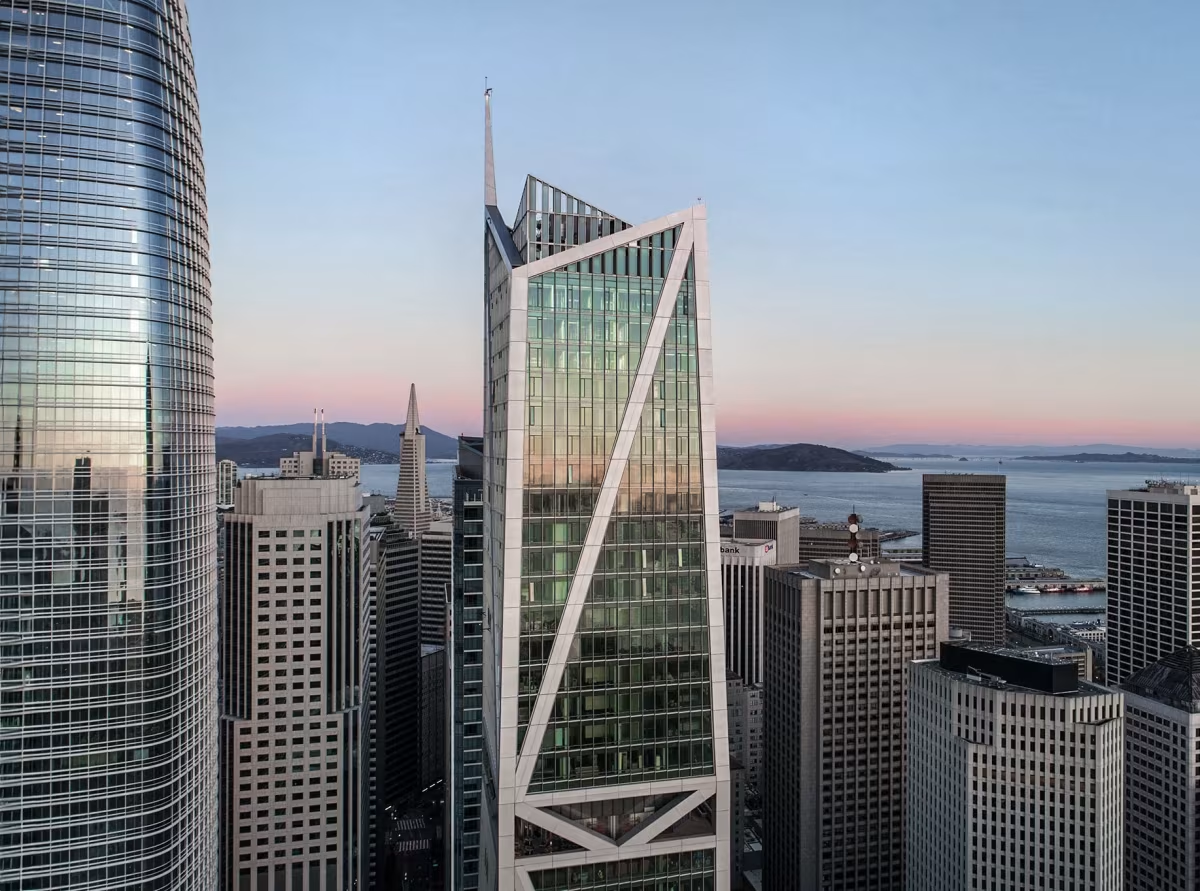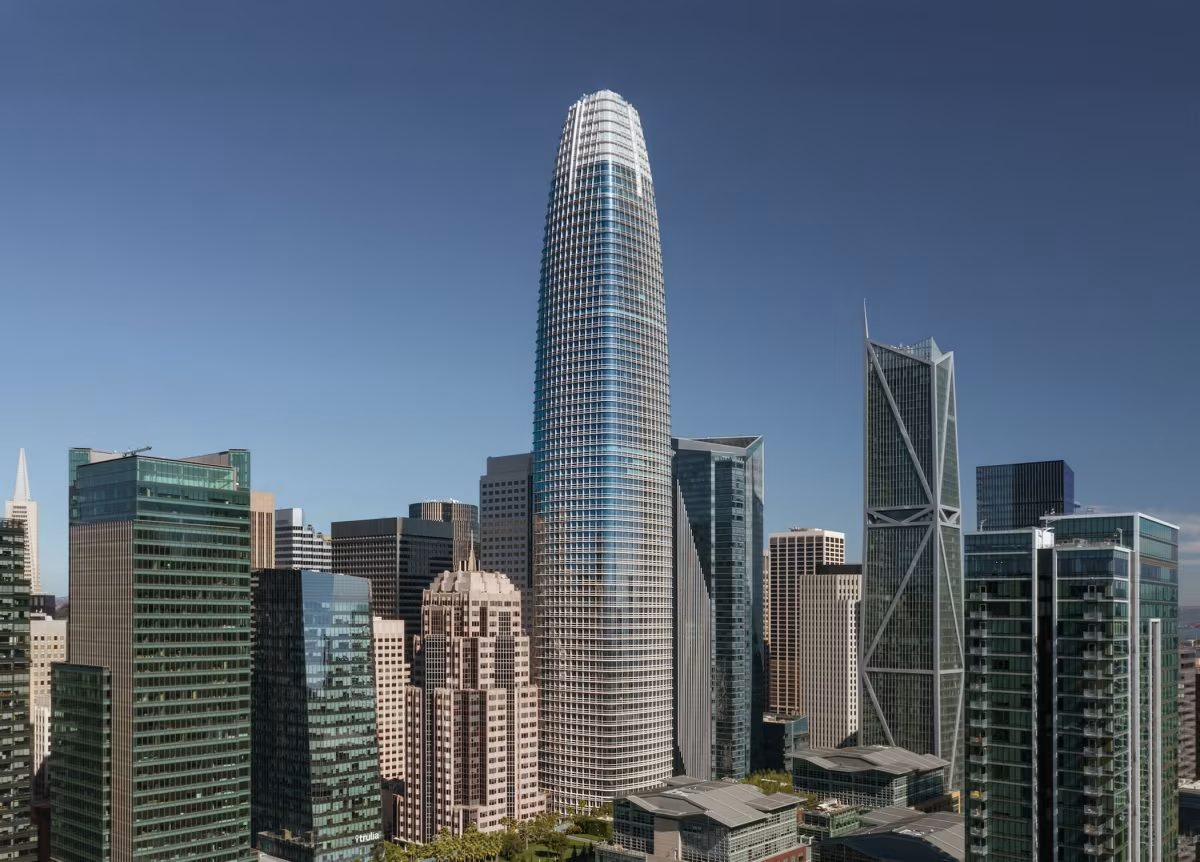181 Fremont Building vs Salesforce Tower


Comparing the 181 Fremont Building and the Salesforce Tower is interesting because they both stand in San Francisco, CA, and were completed in the same year, but they were designed by different architects.
This offers a unique glimpse at how rival designers approached projects in the same city during the same era.
Height & Size
The Salesforce Tower is clearly the larger tower of the two, both in terms of height and number of floors. It rises to 1070ft (326m) with 61 floors above ground, while the 181 Fremont Building reaches 810ft (247m) with 56 floors above ground.
Salesforce Tower also offers more total built-up area, a total fo 1,399,996 sqf (130,064m2), which is about 716,488 sqf (66,564m2) more than what the 181 Fremont Building offers.
Of course, each project may have faced different briefs or regulatory constraints, which we don't really know about and could also explain the outcome.
Architectural Style
Both the 181 Fremont Building and the Salesforce Tower were designed in line with the aesthetic conventions of the Contemporary style.
At the time, this style was at the height of its popularity. So both Heller Manus Architects and Pelli Clark & Partners followed what was in many ways expected of them, producing designs that fit comfortably within contemporary architectural norms, rather than breaking with convention.
Uses
Both the 181 Fremont Building and the Salesforce Tower were designed to serve as commercial towers, and that has remained their main use since their completion, serving similar roles in the urban fabric.
The 181 Fremont Building offers 55 residential units.
Structure & Facade
The two towers rely on different structural systems, reflecting distinct engineering strategies.
The 181 Fremont Building uses a Trussed Tube In Tube structural system, which combines a central core with a perimeter tube reinforced by diagonal bracing, while the Salesforce Tower uses a Framed Tube In Tube system, that combines a strong central core with a perimeter tube of columns.
Yet, when it comes to their facade, they both employed the same solution, a Curtain Wall facade.
A curtain wall is a non-load-bearing facade hung from the structural frame. It is anchored to floor slabs and transfers only its own weight and wind loads, allowing for sleek, glassy exteriors.
| 181 Fremont Building | Salesforce Tower | |
|---|---|---|
| Heller Manus Architects | Architect | Pelli Clark & Partners |
| 2008 | Design Ended | 2005 |
| 2013 | Construction Started | 2013 |
| 2018 | Year Completed | 2018 |
| Contemporary | Architectural Style | Contemporary |
| Commercial | Current Use | Commercial |
| 56 | Floors Above Ground | 61 |
| 5 | Floors Below Ground | 3 |
| 209 | Last Floor Height | 275 |
| 247 m | Height (m) | 326 m |
| 63500 | Built-up Area (m²) | 130064 |
| 17 | Number of Elevators | 34 |
| Trussed Tube In Tube | Structure Type | Framed Tube In Tube |
| Steel | Vertical Structure Material | Steel |
| Concrete | Horizontal Structure Material | Reinforced Concrete |
| Yes | Facade Structural? | No |
| Glass | Main Facade Material | Glass, Metal |
| Level 10 Construction | Main Contractor | Clark Constrruction, And Hathaway Dinwiddie Joint Venture |
| Jay Paul Commpany | Developer | Boston Properties, Inc., And Hines Interests Limited Partnership |
| Thyssenkrypp | Elevator Company | Schindler |
| Arup | Structural Engineer | Magnusson Klemencic Associates |
| Curtain Wall Design And Consulting, Inc. | Facade Consultant | Morrison Hershfield |
| CA | State | CA |
| San Francisco | City | San Francisco |
| 181 Fremont Street | Address | 415 Mission Street |